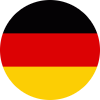Nominations 2020
2020
Academic work in Czech and German Bohemian studies in German
Ina Hartmann: The early prose of Věra Linhartovás in a surrealist context. An attempt to place the works Dům Daleko, Prostor k rozlišení and Rozprava o zdviži in terms of methodology and literary history. Hamburg: Dr. Kovač 2018 (studies on Slavic studies; 44)
Czech surrealism is a phenomenon that continues to this day. In addition to Mikuláš Medek and Milan Nápravník, the promising young author Věra Linhartová also belonged to the Prague Surrealists group for a short period of time in the mid-20th century. During this time, she wrote most of her early Czech prose. A little later, the author left the group and after the suppression of the Prague Spring in 1968 she also left the country. Since then, like Milan Kundera, she has continued her work in French in Paris.
For the first time, the study provides an analysis of selected stories by Linhartová in the context of surrealist topics and techniques: dreams, the unconscious, games and écriture automatique are central to the analysis. The manifestos and writings of French Surrealists around André Breton represent the methodical starting point. The Paris Surrealist group was the decisive initiator and reference point for Czech surrealism. Last but not least, it is only in the light of these references that the specifics of Czech surrealism, such as the poetics in Linhartová's works, can be clearly outlined.
The study provides an independent and insightful interpretation of one of the most outstanding avant-garde authors and fills an important gap in literary research.
Urs Heftrich, Michael Špirit (ed.): Vladimír Holan: Collected Works. Volume 11: Poetry VIII: 1968-1971. The penultimate. Transferred from/by (von) Věra Koubová. Commentary by Urs Heftrich and Michael Špirit. Afterword by Urs Heftrich. Heidelberg: Winter 2018
The suppression of the Prague Spring marked the end of freedom in poetry in the ČSSR. For Vladimír Holan, who, after years of Stalinist publication bans on his work, had finally been acclaimed as a great poet, another dark period began. In May 1968 he had been named a "national artist", but it was precisely this distinction by the state and his popularity among the supporters of the policy of reform that made him suspicious in the eyes of the regime after the reforms were suppressed.
Holan's last two volumes of poems were no longer allowed to appear during his lifetime. This legacy of the poet is practically unknown in German. Holan's penultimate book - 'The Penultimate' - is now being translated for the first time.
Zornitza Kazalarska: Landscapes of Repetition. Czech and Slovak Lyric Poetry of the “Incubation Period” 1955–1965. Frankfurt am Main: Peter Lang 2018
If you become aware of repetition, a landscape will open up to you: the past and the present are in relation to each other; between them links that were not present before emerge. Repetitions not only appear as phenomena of meaning and structure, but also create passages between meaning and presence, they also cause a latency effect. The focus of the study is on the manifestations of repetition and its effects in the Czech and Slovak poetry of the “Incubation Period 1955–1965”. Repetitions in and between texts - permutations and variations, quotations and allusions, self-quotations and text variants, nuances and similarities - form a virtual whole, in the context of which poetics of repetition are sought.
Václav Smyčka: The Memory of the Expulsion. Intercultural perspectives on German and Czech contemporary literature and culture of remembrance. Bielefeld: Transcript 2019. (Interculturality. Studies on language, literature and society; 15)
The flight and expulsion of the Germans from Czechoslovakia has left its mark on the cultural memory of Germany and the Czech Republic. How are the memories of these events shared across generations? Can various experiences from one culture of remembrance be translated into another?
Václav Smyčka examines the reappraisal, interpretation and staging of the past the two countries have in common, thereby carrying out for the first time a complex analysis of the cultural memory of both German and Czech contemporary art and literature.
Neil Stewart: “Bohemiens” in the Bohemian Press. The magazine "Moderní revue" and Prague modernism. Heidelberg: University publisher. winter 2019
The “Moderní revue pro literaturu, umění, a život” (The Modern Revue for Literature, Art and Life), which was published monthly for almost thirty years between 1895 and 1924, was an important institution of Prague modernism and accelerated the modernization and internationalization of Czech culture around 1900. Its extravagant and experimental layout marks the beginning of a bibliophile tradition in Bohemia. After the First World War, however, the magazine defended views that had gone out of date and ended up politically as a mouthpiece of the extreme right - a process that can serve as an example of the changes in modernity and its precarious situation on the eve of fascism.
This study reconstructs the case of the “Moderní revue” with due consideration of historically-sociological, aesthetic, semiotic and intermedia aspects, whilst also taking into account the magazine’s peculiar position on the media scene and its appeal as a complex 'text'.
Eva Sturm: Places of Remembrance. A literary journey through Saxony, Bohemia and Silesia. Dresden: Thelem 2019.
The book examines the culture of remembrance and the multi-layered, often conflicting 'negotiations of identity' in the regions of Saxony, Bohemia and Silesia. To start with (a metaphorical first step), it describes a cross-border place of remembrance, where these regions meet culturally and historically, and it notices in particular selected places of remembrance such as monuments, birth-houses of poets or literary museums. Authors, the media, literary texts, and institutions create these places of memory in a two-way communication process. The book describes the creation, rewriting, destruction and re-coding of these places of remembrance and the controversies around the sovereignty of interpretation or around shared and 'difficult' memories in detail.
It becomes apparent how intensively literature influences the specific formation of a cultural area as well as the formation of collective memory and regional identities. Secondly (a metaphorical second step), the study systematically transfers the complex cultural knowledge of the literary regions and their stories into the field of educational tourism and makes it suitable for cultural activity. Structured as a literary journey through Saxony, Bohemia and Silesia, the book develops an accessible topography of commemoration that brings the literary towns and villages of these regions into context.
Manfred Weinberg, Irina Wutsdorff, Štěpán Zbytovský (ed.): Prague Modernism(s). Intercultural perspectives on space, identity and literature. Bielefeld: Transcript 2018
"Czechs, Germans, Jews" (Max Brod) - so far in the portrayal of cohabitation in Prague in the early 20th century Pavel Eisner's diagnosis of a "triple ghetto" has been predominant and led to the tendency to draw distinct lines between the groups.
The meetings of the research association "Prague as a hub of European modernism(s)", on the other hand, were based on newer theories of interculturality and social and cultural structure. This book documents how through this, discursive dynamics were brought to the fore, which at that time determined collective and individual processes forming identity as well as the development of literary communication communities.
Academic work in Czech and German Bohemian studies in Czech
Vladimír Spáčil, Libuše Spáčilová: České překlady Míšeňské právní knihy. [Czech translations of the Meissen Book of Law.] Olomouc: Memoria 2018
This unique book presents the Czech-language edition of the best-preserved manuscript from the Meissen Book of Law. It is the complete version of the rights and privileges of Magdeburg, which influenced the rights and privileges of towns in Bohemia and Moravia from the 14th century onwards.
Jiří Stromšík (ed.): Kurt Krolop: Studie o německé literatuře. [Studies on German Literature.] Praha: Triáda 2018
Kurt Krolop has always focused on German-language literature from the Czech lands – mainly on the work of Karl Kraus, born in Jičín, and the Prague author Franz Kafka - and thus on the subject of historical change in the everyday coexistence of Czechs, Germans and Jews. However, Krolop's research area was much broader. It would be difficult to find anyone among his contemporaries with similarly profound and detailed knowledge of all German-language literature, at least since the 18th century. Krolop's in-depth knowledge of the time of Goethe formed the basis of his studies of 20th century literature, yet he could use this knowledge in separate independent work. His introductions to the work of Novalis, Tieck, E. T. A. Hoffmann, Bonaventura's Nightwatches, Goethe's Faust and Poetry and the Truth set certain standards to the Czech reception of German classicism and romanticism. His essays or notes (which themselves are often just as important) on Karel Čapek, J. Hašek, F. Peroutka, K. Poláček or F. X. Šalda also confirm his status as an important expert on Czech and Slavic culture. These are texts of rare objectivity and balance, and they undermine the national clichés and prejudices of both sides of the tense and conflict-ridden, but also productive cohabitation of Czechs and Germans, and which also reveal a great deal of new information ignored in previous research.
Ivo Habán, Anna Habánová (ed.): Paul Gebauer. Liberec: Národní památkový ústav 2018
The Liberec regional office of the Czech National Office for the Preservation of Monuments, is overseeing the project “Nové realismy na československé výtvarné scéně 1918–1945” (New trends in realism on the Czechoslovak art-scene 1918–1945). It published a monograph on the German-Silesian painter of the New Objectivity movement Paul Gebauer at the end of the year 2018. The publication provides a complex depiction of various aspects of Gebauer's work, which even today evoke emotive reactions and will undoubtedly remain a subject of research.







